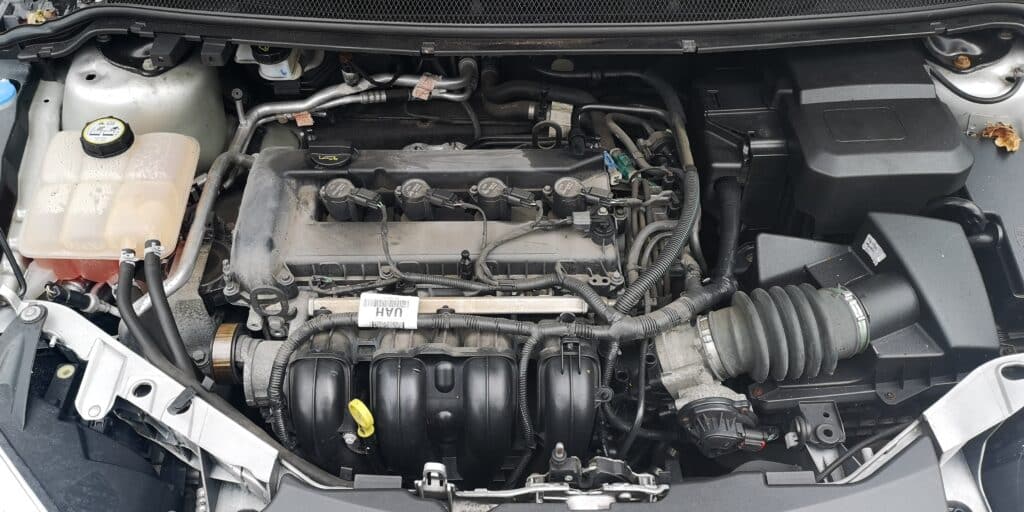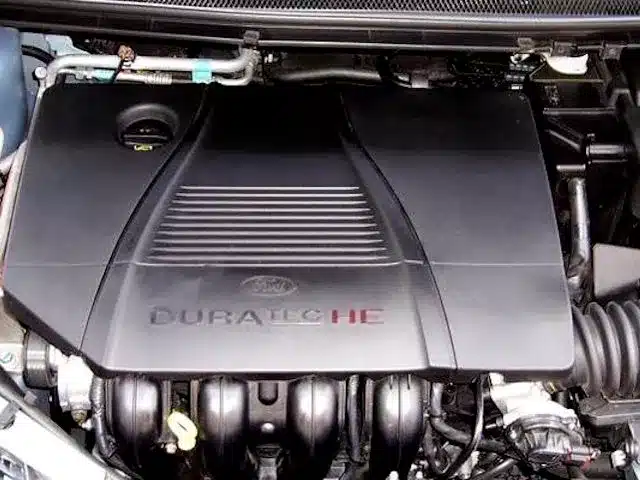The Ford 2.7L EcoBoost engine is a new addition to Ford’s lineup of engines. Ford claims that the engine will lead to more fuel efficiency, and critics claim that it is just an over-rated, high priced powerplant. This blog post will discuss what Ford has said about the engine and what we know about its reliability based on specs and reviews from other sources.
Every drop of fuel counts for an EcoBoost engine. So expensive that it reduces fuel consumption by significantly reducing CO2 emissions to 99 g / km. Details on fuel consumption and CO2 emissions are available on the respective vehicle pages below. The such outstanding performance of the EcoBoost engine is achieved thanks to the direct injection system. A precise amount of high-pressure fuel is injected directly into the combustion chamber. This innovative and efficient way of using fuel means that EcoBoost engines can run on a lean air/fuel ratio when the minimum amount of fuel is used while traveling at cruising speed.
Every EcoBoost engine has turbochargers to deliver power well beyond the engine’s capacity. The turbochargers are spun up by exhaust gases that are not normally used and pressurize the engine with high pressure, resulting in a significant increase in power.
Ford 2.7 EcoBoost Specs
EcoBoost 2.7 is a 2.7-liter gasoline engine with a 310-335 hp capacity. Twin-turbocharged. Installed on Ford Bronco, Ford Edge.
| Engine family | EcoBoost |
| Assembly sites | Lima, Ohio |
| Fuel type | Gasoline |
| Displacement | 2,694 cc (164 cu in) |
| Aspiration | Twin-turbo |
| Configuration & cylinders | V configuration, six cylinders |
| Vehicle engine orientation | Transverse/longitudinal |
| Valve configuration | Dual overhead cam (DOHC) with variable camshaft timing (VCT) |
| Fuel system | Direct injection – 2015-2017; Direct injection + port injection since 2018 |
| Valvetrain layout | DOHC |
| Bore | 83.0 mm (3.27 in) |
| Stroke | 83.0 mm (3.27 in) |
| Compression ratio | 10.3:1 |
| Max power @ RPM | 335 hp @ 5,000 rpm |
| Max torque @ RPM | 400 lb-ft @ 2,750 rpm |
| Cylinder head | Aluminum |
| Cylinder block | Compacted graphite iron (CGI) |
| Camshaft drive | Chain |
| Firing order | 1-4-2-5-3-6 |
| Engine oil weight | SAE 5W-30 fully synthetic motor oil |
| Engine Oil Capacity | 5.7 l (6.0 qt) – with oil filter |
| Oil change interval | 10,000 miles (15,000 km) / 12 months |
| Predecessor | Ford Duratec V6 |
Ford 2.7 EcoBoost Engine Oil Capacity
The EcoBoost 2.7L engine requires 6 US Quarts (5.7 Liters) of new SAE 5W-30 oil for an oil change with a new oil filter.
2.7 EcoBoost Modifications
- 325 hp (242 kW) at 5,750 rpm, 375 lb-ft (508 Nm) at 3,000 rpm. Application: 2015-2017 Ford F-150.
- 325 hp (242 kW) at 5,000 rpm, 400 lb-ft (542 Nm) at 2,750 rpm – the second-gen 2.7L EcoBoost engine for 2018+ Ford F-150s.
- 335 hp (250 kW) at 5,500 rpm, 380 lb-ft (515 Nm) at 3000 rpm. Application: Lincoln MKX, Lincoln Continental.
- 335 hp (250 kW) at 5,500 rpm, 380 lb-ft (515 Nm) at 3,250 rpm. This is a new EcoBoost for the Lincoln Nautilus.
- 315 hp (235 kW) at 4,750 rpm, 350 lb-ft (475 Nm) at 2,750 rpm – Ford Edge Sport engine.
- 335 hp (250 kW) at 5,000 rpm, 380 lb-ft (515 Nm) at 3,000 rpm – Ford Edge ST engine.
- 325 hp (242 kW) at 5,500 rpm, 380 lb-ft (515 Nm) at 3,500 rpm – Ford Fusion Sport engine.
Ford 2.7L EcoBoost Engine Second Generations
Ford updated the 2.7L EcoBoost engine in its F-150 truck with features from its 3.5L EcoBoost, including direct injection and new turbochargers.
With small modifications, including reducing friction, the new 2.7 L V6 engine was more efficient and reliable than its predecessor.
Is the 2.7 L EcoBoost a Reliable Engine?
If you’ve maintained the engine recently and no major modifications have been made to it, the EcoBoost will last up to 250 000 miles and more.
Ford 2.7 EcoBoost Engine Problems and Reliability
- Carbon build-up
- Oil pan leaks
- Spark plugs & ignition coils
The 2.7L EcoBoost engine has a short history and few common problems at low mileage, but it can happen with any new engine due to possible parts failure.
The second generation is more balanced and reliable. In addition, it has an additional port injection which prevents a carbon buildup on valves and walls of intake ports and is also optimal for turbocharged engines.
Like other turbo engines, the 2.7 EcoBoost engine requires synthetic oil-a a lack of even basic maintenance puts it at risk for early failure. Direct injectors are also more straightforwardly involved with combustion, and a dirty or faulty one will need to be replaced quickly.
Above are the most common engine faults that will occur in this vehicle. However, it is important to note that this does not indicate they are actually common. Rather, each of these failures has been known to happen at one point or another due to an engine’s accruing age and mileage (particularly the 2.7 liter EcoBoost motor). We’ll discuss all five engine faults listed above before moving on to thoughts about why people should consider quitting for reliability and what users can do about it.
The 2.7 V6 EcoBoost engine is generally reliable, with few common problems. Ford quickly fixed the oil leaks in second-generation engines and added vent injection into second-gen models to keep carbon build-up at bay. However, twin-turbo engines are tougher on maintenance than single or non-turbo engines because of more demanding fuel requirements and ignition parts.






